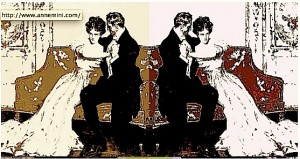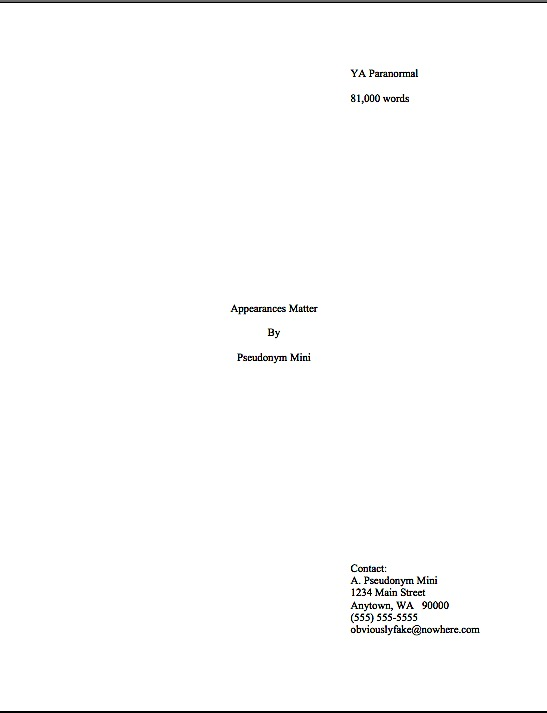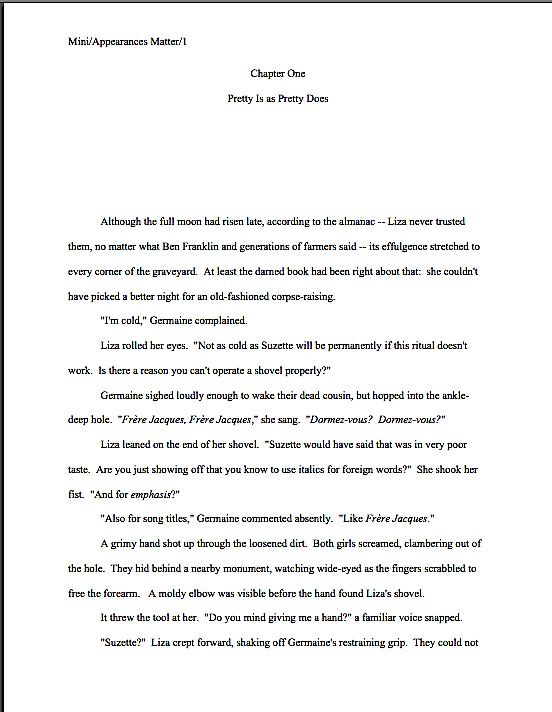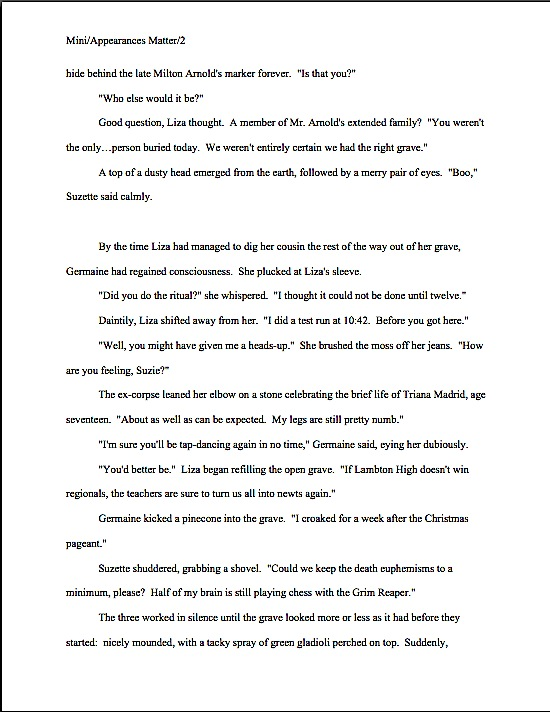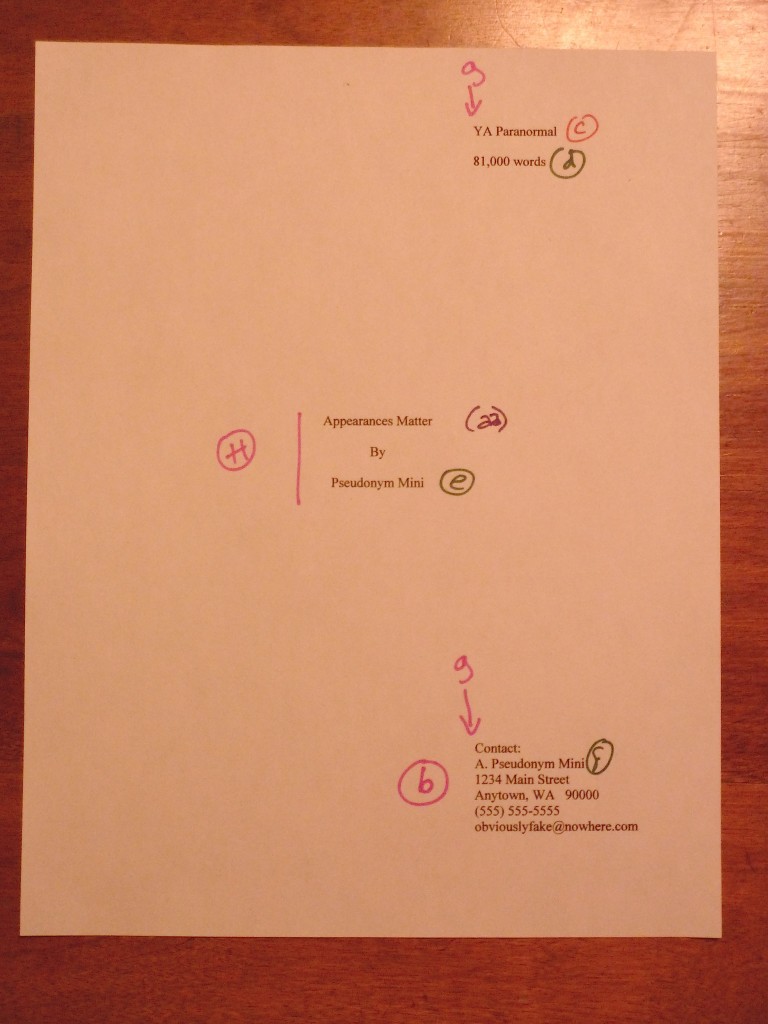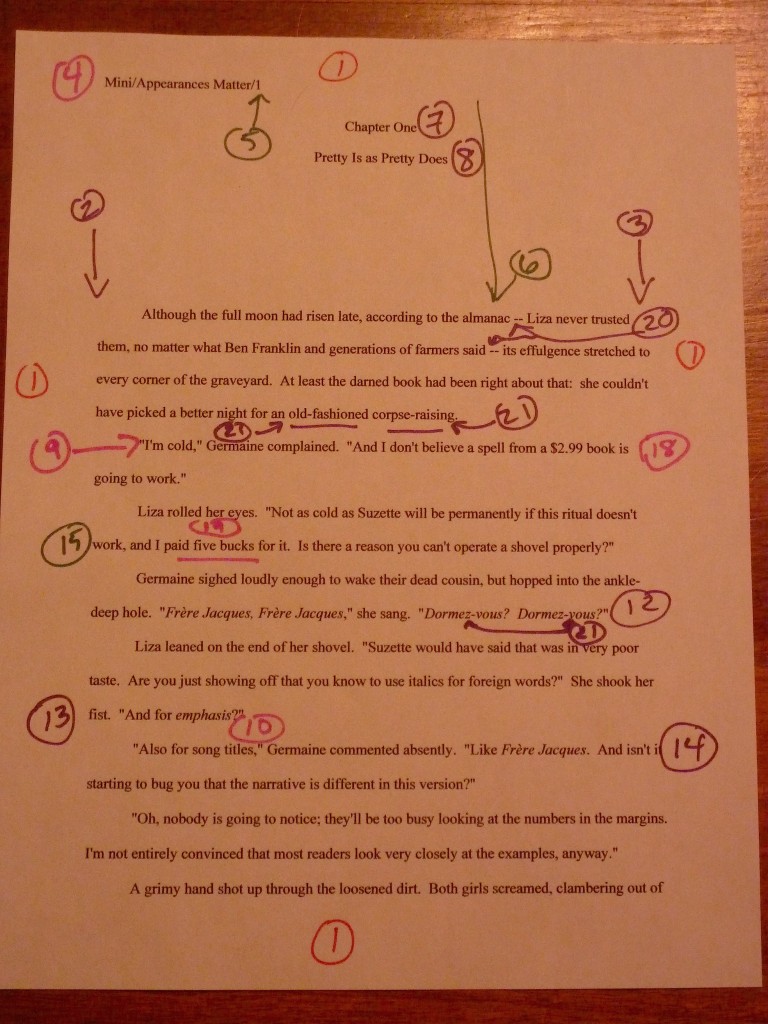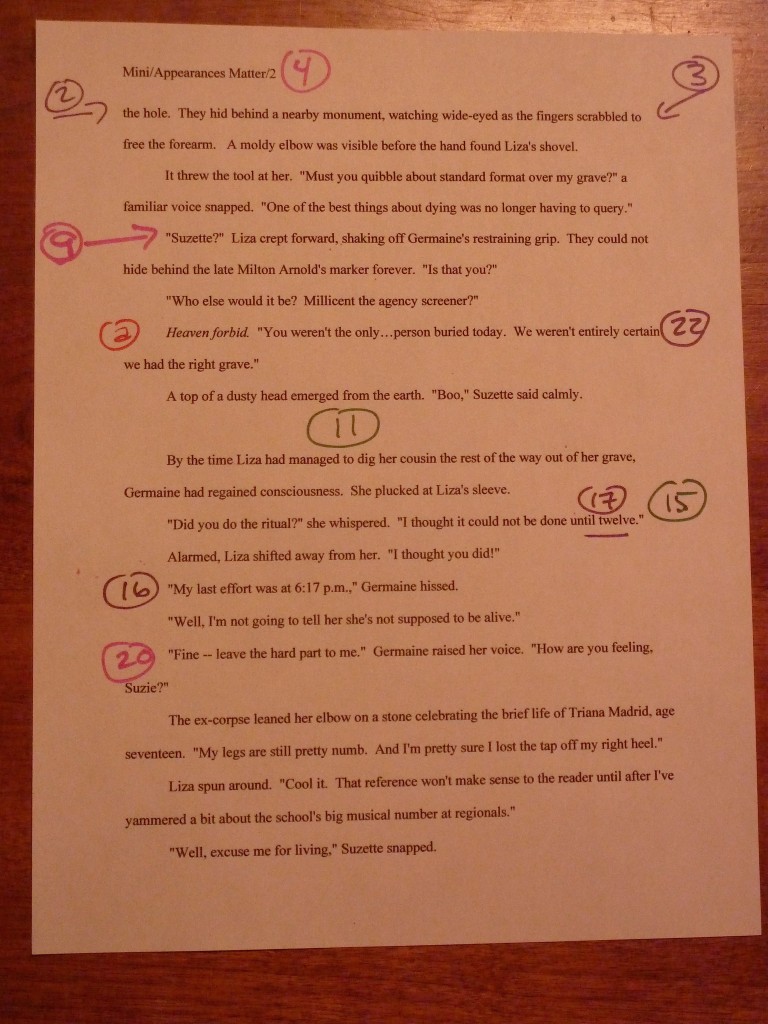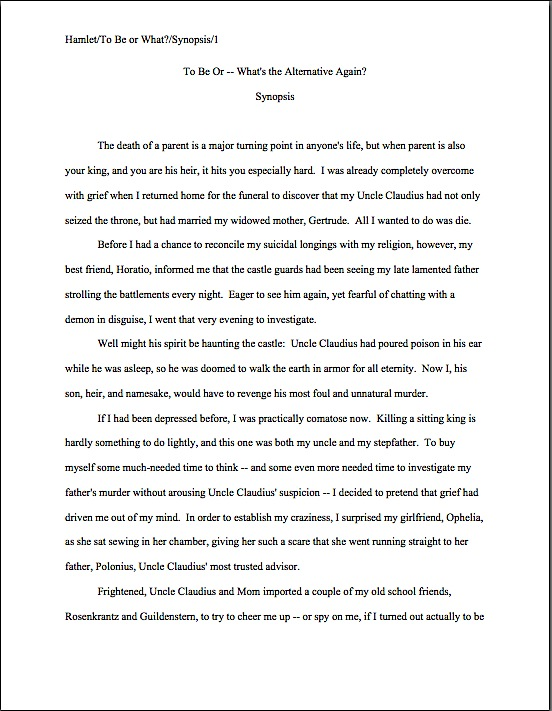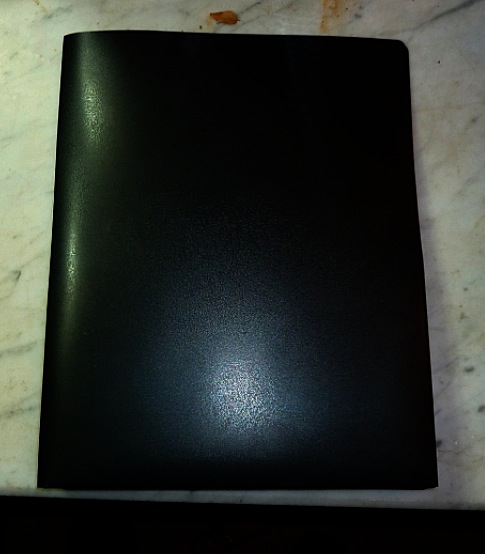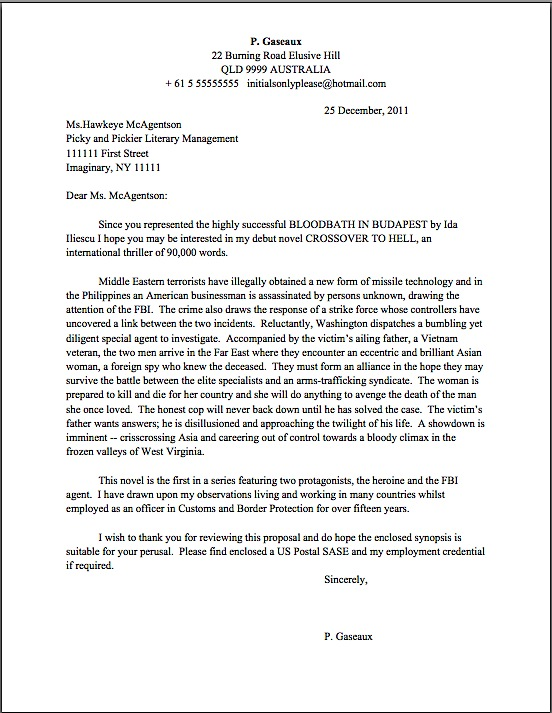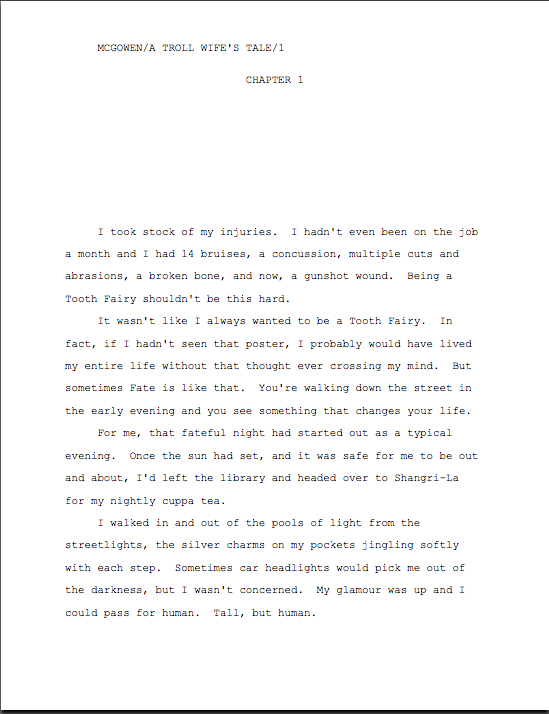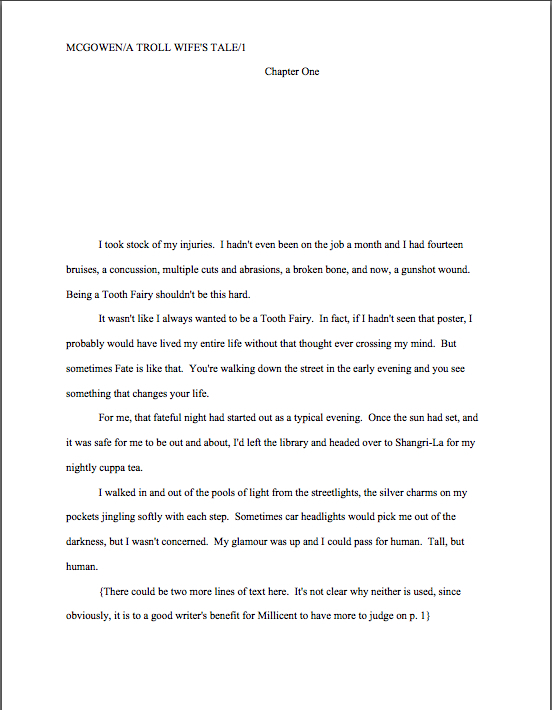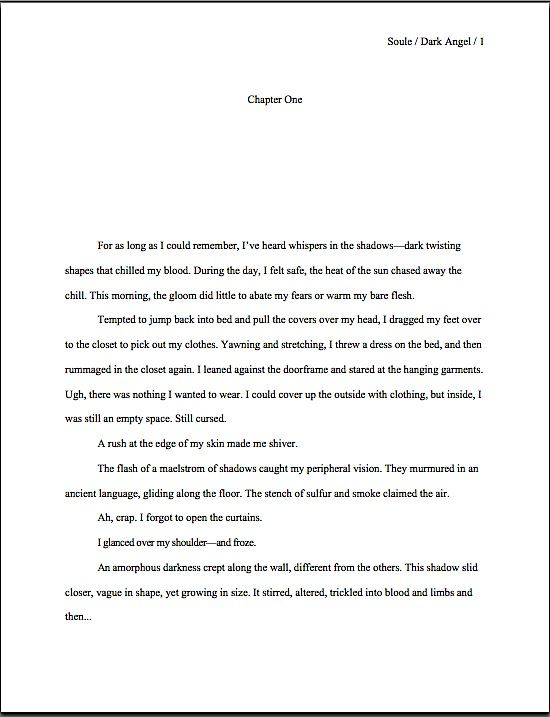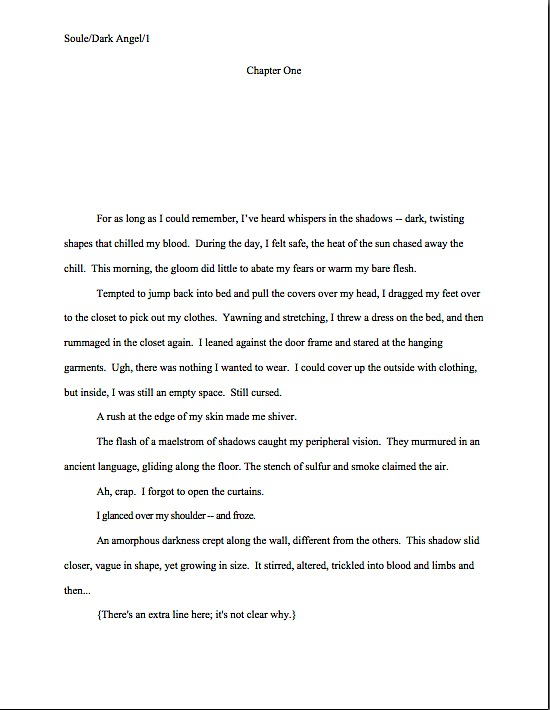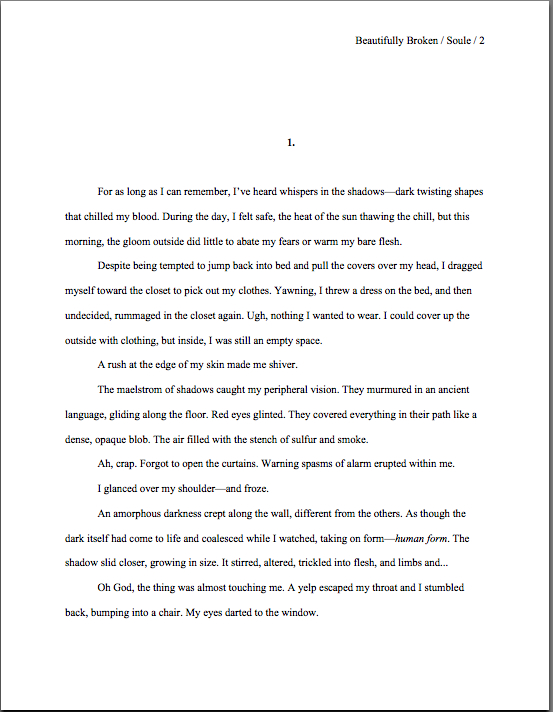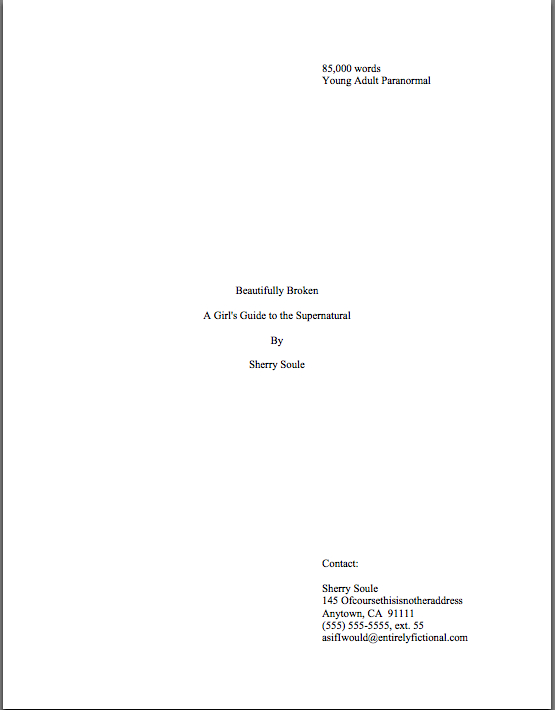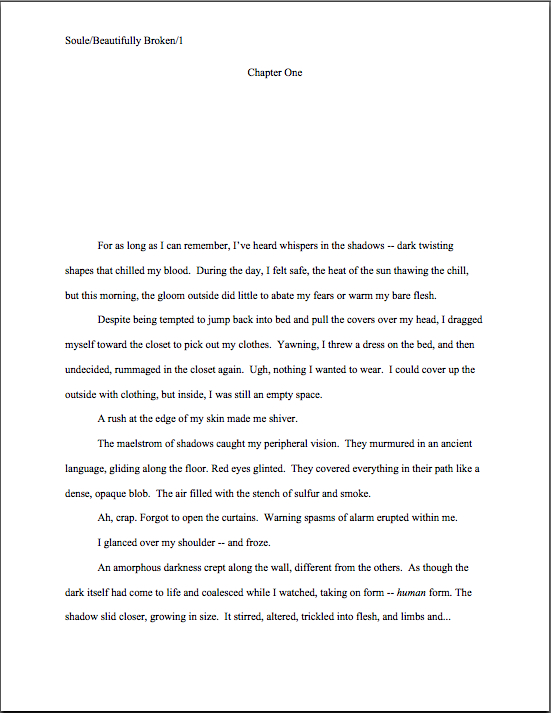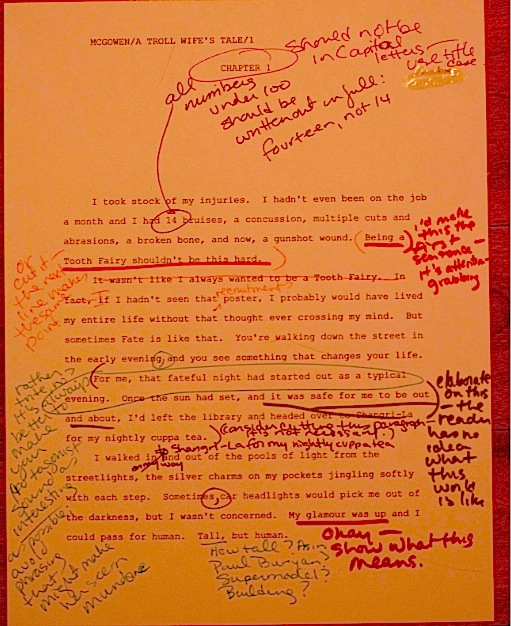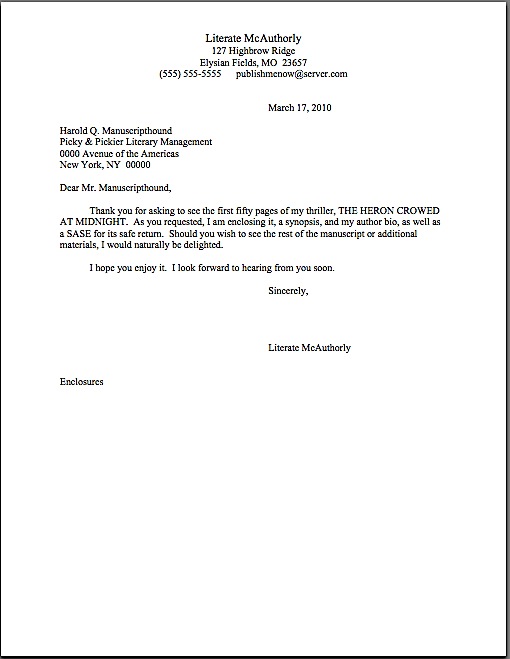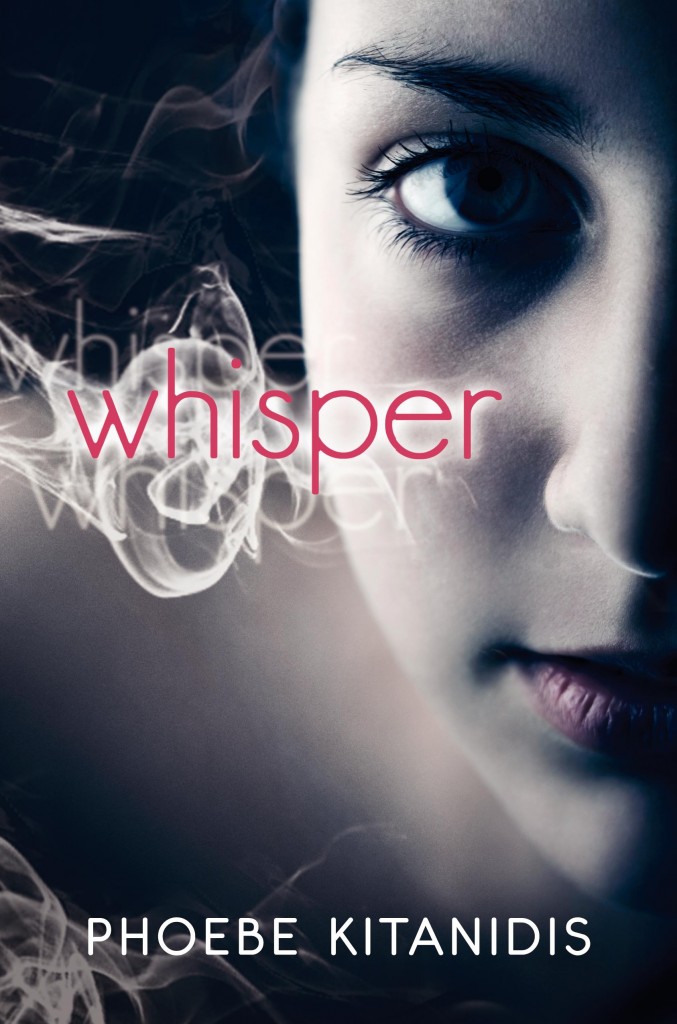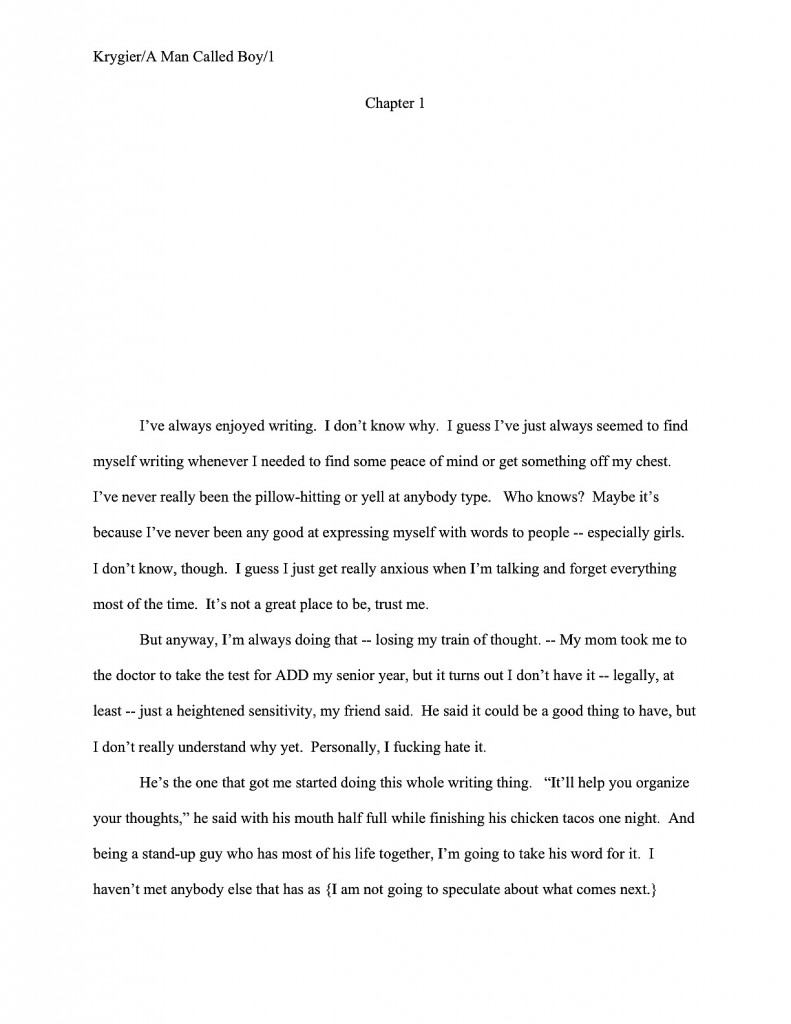When last we met, before time so rudely interrupted me by passing in the conventional manner, we were deep in the throes of discussing the thorny issue of exclusive submissions, de facto and otherwise. As flattering as it is to be asked not to send your manuscript elsewhere while an agent or editor at a small press considers your writing, it’s not invariably to a conference pitcher or successful querier’s advantage to give into the almost universal initial impulse to shout, “Yes! Yes! A thousand times, yes!” before it’s entirely clear to what one is agreeing. Sometimes, that happy shout echoes later rather dismally in the ears of the writer caught in the ostensibly enviable situation of having a second agent or editor at a small press say yes to a query whilst the manuscript in question (or a partial) is dallying with the first.
That echo can be especially mournful, if you’ll forgive my bringing it up, to the writer who learned only through first-hand experience that just because an agent or editor asks, usually quite nicely, if she may read the book before any other pro does, it doesn’t necessarily speed up the consideration process. A request for an exclusive does not generally mean that the requester intends to clear his schedule to read those pages the instant they arrive, after all. That’s not too astonishing, considering how rare it is for any single request for an exclusive to be the only one an agent or editor makes in, say, a conference season. Or in six months’ worth of queries.
Oh, dear, did the behemoth thump that just shook the cosmos indicate that I should have advised you to sit down before reading that last paragraph? I’m not altogether flabbergasted, because frankly, misunderstanding — or even misreading — the terms of an exclusive submission request tends to be the norm, rather than the exception. All too often, overjoyed pitchers and queriers will respond to what they think the agent is asking, rather than what she actually says.
Completely understandable, right, when such requests so frequently come as a surprise? In the moment, even a simple “Hey, that was a good pitch; send me the first 30 pages” can sound like winning, if not the lottery, then at least a bet on a long shot at the Kentucky Derby. With every cell in a writer’s brain gurgling, “At last! At last!” it’s not particularly uncommon for conference pitchers to presume that any request for pages could only have been intended as an exclusive.
“But Anne!” those of you who joined me for our last discussion on the topic cry. “How can that be? Such expectations are always stated explicitly. So unless an agent or editor actually asks for an exclusive, or the agency for which the requesting agent works has a clearly-expressed exclusives-only policy posted on its website, why would it ever be to a submitter’s advantage to stop submitting to others while the requesting agent is reading the manuscript? Heck, why would it even be to that writer’s advantage to cease querying in the meantime?”
The short answer is that it wouldn’t — and how gratifying that you caught that, inveterate readers. It almost invariably slows down a manuscript’s search for a professional home to submit, much less query, only one agency at a time. And what does the writer gain by the delay, really? At best, submitting it to only one agent might save the writer from having to query and/or submit further. Not an insignificant conservation of energy, true, but bought at the expense of quite a risk.
“What risk?” those of you delighted by the very notion of having to query and submit only once over the course of a long and doubtless illustrious literary career. “Spending as little time as possible in this stress-fest sounds completely fabulous to me!”
And it could indeed be great — presuming that this agent is in fact the perfect fit for the book, literary market conditions appear to be favorable for that book category, and the manuscript itself is in great shape. Oh, and that our old pal and nemesis, Millicent the agency screener, happens to be in an exceptionally good mood on the day that the submission crosses her desk. If even one of those elements happens to be slightly off, resulting in Agent #1’s not saying yes, then that eager writer will have to start all over again from scratch.
Which, let’s face it, can require quite a bit more oomph than getting a set of queries out the door the first time around. Post-rejection querying, pitching, and even submission in response to the next yes calls for not only faith in your talent and your work — it also requires telling the hobgoblins of doubt to stop murmuring in the dead of night something that logic tells us cannot possibly be true: that a rejection from one agent must mean that every other agent currently trundling across the earth’s crust would just reject it, too.
“So why bother?” the hobgoblins chortle at 3 a.m. “Why not just write off the book into which you have been pouring your heart and soul for eons? You could always start a new one.”
Fortunately, hobgoblins are notoriously ignorant of the ways of the publishing industry. The next time they rear their ugly heads, inform them that good, even great, manuscripts get rejected all the time. It can take a while to find the right fit for a book. So shut up and let nice writers everywhere sleep, already!
Given that level of querying-, pitching-, and submission-related anxiety, it’s hardly astounding that the overwhelming majority of aspiring writers respond to requests for exclusives with an enthusiastic chorus of, “By all of the great heavenly muses, YES! If I overnight it to you, will that be soon enough to get started?” As long as you’re walking into it with a clear mutual understanding of what you and the requesting agent are and are not promising each other by agreeing to an exclusive, go ahead and be as enthusiastic as you please.
What’s that the masses are thinking so loudly? That you’d like a refresher in what the default terms would be? Happy to oblige.
If a writer agrees to grant an exclusive to an agent,
(a) only that agent will have an opportunity to read the requested materials;
(b) no other agent is already looking at it;
(c) the writer will not submit it anywhere else;
(d) in return for these significant advantages (which, after all, mean that the agent will not have to compete with other agents to represent the book), the agent will make a legitimate effort to read and decide whether or not to offer representation, but
(e) if no time restriction is specified in advance, or if the agent always requests exclusives, the manuscript may simply be considered on precisely the same timeframe as every other requested by the agency.
Sometimes, though, even knowing all of that in advance and acting with according wisdom will not prevent a conscientious submitter from running into exclusive-related problems. What happens, for instance, if Agent A, the original requester, hasn’t gotten back to the writer by the time another request for pages arrives? Oh, it could happen, if the writer has been serious enough about landing an agent to send out more than one query at a time.
That trajectory runs something like this: our hero/ine took a deep breath, girded his or her loins, and sent out a truly impressive array of queries to category-appropriate agents. Of those many recipients, several responded, asking to read pages. Response rates are as unique as snowflakes, though, so each agent responded in her own time. So once Agent A was delighted enough with the query to ask for an exclusive peek, it’s entirely possible that our intrepid writer will have already sent out a partial to Agent B, as well as full manuscripts to Agents C and D.
Then, too, sometimes requests for pages come in clumps. If an e-querier sends out a barrage of missives all at once, he might well receive several positive responses withina few days. If nobody asks for an exclusive, no problem: he can just send them all out simultaneously. But what if one of those agents wants to be the only one looking at it?
Are those of you devoted to conference pitching feeling left out? No need: let’s say that prior to a well-stocked writers’ conference, our hero/ine knelt before his or her computer and swore not to allow a single viable (yet polite) opportunity to pitch pass ungrasped. It’s entirely possible that s/he will stride away from those pitch sessions with more than one request. If only Agent A asked for an exclusive, should the our knight grant it, even if that means putting off non-exclusive requests from Agents B-D?
While we’re tossing around rhetorical questions, what is the writer to tell all of those other agents in the meantime? And, at the risk of terrifying you, may I also inquire what happens if the exclusive-requester doesn’t get back to the writer in a timely manner?
None of these are particularly uncommon dilemmas for submitters to face, incidentally. Often, though, writers who find themselves in these awkward positions are too embarrassed to discuss them. They tend to feel, sometimes with some justification, that they should have been prepared for any of these eventualities. After all, an exclusive is serious business, a matter of professional integrity, and therefore probably not the kind of thing to which a savvy writer would, upon mature consideration, grant lightly.
Say, in the midst of an extended fit of alternated giggling and hyperventilation because a REAL, LIVE AGENT has asked to see one’s work. At that particular moment, the other seventeen queries one has out and about might conceivably slip one’s mind.
Especially if, as is often the case, the request for an exclusive is a trifle vague. (“I’d like an exclusive on this, Minette,” is often the extent of it.) In the throes of delight, the impulse to scream “YES!” has occasionally been known to overcome the completely rational urge to ask, “Excuse me, but what precisely would that mean for me?” Or even, “Pardon me, O person who has the power to change my life, but what happens if I don’t say yes immediately?”
I can feel some of you quaking in your jammies over the idea of being bold enough to ask either of those questions. Or, indeed, any at all: follow-up questions in the wake of exclusive requests are as rare as spotting a unicorn having tea with the Loch Ness Monster on a blue moon. That’s unfortunate, since, as junior high school taught so many of us, picking dare in a game of truth-or-dare is dangerous precisely because one does not get to hear all the details of the dare before agreeing to attempt it.
Oh, like I was the only eighth grader who…well, never mind. Suffice it to say that in manuscript submission, as in life, one makes better choices if one knows the options prior to choosing amongst them.
Which is to say: you have more power here than you think, provided you are aware of it in advance. Why? Well, think about it: as flattering as a request for an exclusive is to an aspiring writer, granting it is optional.
Before anyone starts jumping up and down, thrilled to the gills at the idea of magnificent concessions writers might wrest from an agent averse to reading competition, the power to which I refer is fairly limited. The writer may say yes to the exclusive, or she may say no. She may also say, “Thanks, but not now.”
Not that the writer is required, or even encouraged, to give any of these responses directly to the agent, mind you. If the answer is anything but yes, don’t contact the agent to explain. Trust me, if your manuscript doesn’t arrive within a few months, Agent A will intuit that you’re not leaping to say yes to an exclusive. Since the manuscript’s arrival (accompanied, ideally, by a cover letter beginning, “Thank you so much for asking to read my pages on an exclusive basis,” or something similar) would be the accepted means of agreeing to an exclusive, there’s no call for the writer to fill Agent A’s inbox with notifications that it’s on its way, explanations that while an exclusive would be great, Agent B will have to respond first, or the most popular option of all: a long, whiny missive complaining that Agent C has had the manuscript for X amount of time without getting back to the writer, so could Agent A please retract that whole insistence-upon-an-exclusive thing?
I can tell you now that none of these communications will be appreciated. It’s hardly news to agents that aspiring writers query and submit widely these days; it’s quite normal for a savvy writer not to be able to grant an exclusive right away. Until that writer can, however, the particulars of who would need to respond simply don’t matter to Agent A.
And no, in response to what half of you just thought so loudly, if Agent A prefers an exclusive, or if his agency does, you’re not going to be able to talk him out of it. Regardless of how stressful you find the multiple-request situation, it’s not fair to expect the agent to solve it for you. If you can’t say yes now, say it when you can.
That doesn’t mean, though, that you need to grant an open-ended exclusive. Whether you already know that Agents B-D want to read pages, that they are considering your query, or just that you wish to keep your options open, it’s always a good idea to set a time limit on an exclusive. You should also reserve granting exclusives your top-choice agents.
What’s that? When two million of you are shouting, it’s hard to hear. Yes, 10,000 closest to me? “But Anne, I just want an agent! How the heck do I, someone brand-new to the business side of publishing, know who should be my top picks? All I really know about Agents A-D is that they represent books in my category!”
Actually, if you’ve done that much research, you’re ahead of the game: it’s not at all uncommon for aspiring writers to query agents without first checking to see what they do and don’t represent. (“An agent’s an agent, right?” they reason, wrongly.) It’s also pretty common for pitchers to approach agents at conferences without having any idea what they represent. That’s just annoying for everybody. It truly is in your book’s best interest to do a bit of homework about what kinds of books an agent has sold recently before trying to interest him in representing yours.
But let’s say that you didn’t, perhaps for a good reason. Perhaps a conference’s organizers simply assigned you to an agent for your pitch session; maybe you just entered thriller into one of those search engines, and it spit out every agent in the country that checked that box on a form. Or you spent most of your time with a guide to agents in the index-by-region section. Regardless of how you ended up with requests for pages from Agents A-D, you certainly have the means of finding out more about them before you submit, enabling you to decide which might be the best fit for you.
Why put in that effort, when all reputable agents sell books? Because, contrary to amazingly popular opinion amongst aspiring writers, no good writer wants to land just any agent; everyone wants the best agent for his or her book. Or should want that, at any rate.
How might a savvy writer figure out which interested agent that’s likely to be? Well, a simple web search isn’t a bad place to start. If the agency has a website — and not all of them do, believe it or not, even at this late date — it will usually list the major clients. Generally, it will also feature at least a brief bio for each of its member agents.
It’s also worth checking whether the agent (or the agency) has a blog or has given interviews about being an agent. Not every agent does, of course, but why not embrace the generosity of those who have taken the time to share their literary preferences with potential clients?
My point: it’s going to be awfully difficult to decide whether you’re already excited enough about Agent A to be positive that she is the agent of your dreams — positive enough that you’re willing to forego, at least for now, submitting to Agents B-D — in the absence of some substantive research about all of them. If, after doing that research, you don’t feel that you would say yes right away if Agent A offered to represent your book, are you sure that you want to give A an exclusive that’s going to limit your ability to show your manuscript to others?
Think of granting an exclusive as if you were applying for early admission to an Ivy League school: if the school of your dreams lets you in, you’re not going to want to apply to other universities, right? By applying early, you are saying that you will accept their offer of admission, and the school can add you to its roster of new students without having to worry that you’re going to go to another school instead.
It’s a win/win — but only if that actually was the school you wanted to attend. (I speak from experience here: once I got into Harvard early, I had a whale of a good time going to group interviews with my high school friends and saying, “Wow, that’s an interesting question, Mr. Alumnus. Allow me to turn that question into an opportunity to discuss the merits of Kathleen here.” And then Kathleen would get all excited, because Mr. Alumnus had the power to admit her to the school of her dreams.
Oh, you thought I woke up one bright day as an adult and suddenly became public-spirited? I regard a broad range of endeavor as team sport.)
If the best agent in the known universe for your type of writing asks for an exclusive, you might be well advised to say yes. But if you have any doubt in your mind about whether Harvard really is a better school for your intended studies than Yale, Columbia, or Berkeley — to mix my metaphors again, as well as irk my erstwhile classmates — you might want to apply to all of them at the same time. That way, you may later decide between those that do admit you.
In the extremely unlikely case that I’m being too subtle here: a request for exclusive is great only in proportion to how much you would like to be represented by the person asking for it. The good news is that you don’t have to wait around passively. Once you have done your homework, you can more easily decide whether you would prefer to go steady right off the bat or date around a little. Got it?
If not, I can keep coming up with parallels all day, I assure you. Don’t make me delve into my vast store of zoology metaphors.
Do all of those averted eyes mean that you have no intention of saying no to a REAL, LIVE AGENT that wants to SEE YOUR WORK? Or merely that you’re hoping desperately that the muses have abruptly decided to assign one of their number to make sure that of those 17 agents you have approached, the only one that prefers exclusive submissions contacts you first, swears to get back to you within 48 hours, and offers to sign you in 36?
Well, I wish the best for you, so I hope it’s the latter, too, but let’s assume for the moment that at least one writer out there falls into the former category. If you say yes, lone intender, set a reasonable time limit on the exclusive, so you don’t keep your manuscript or proposal off the market too long. This prudent step will save you from the unfortunately common dilemma of the writer who granted an exclusive a year ago and still hasn’t heard back.
Yes, in response to that gigantic collective gasp I just heard out there: one does hear rumors of agents who ask for exclusives, then hold onto the manuscript for months on end. Or even — brace yourself — a year or two.
I can neither confirm nor deny this, of course. All I can tell you that since the economic downturn began, such rumors have escalated astronomically.
Set a time limit, politely. Three months is ample. (And no, turning it into three weeks will almost certainly not get your manuscript read any faster. This is no time to be unreasonable in your expectations.)
No need to turn asking for the time limit into an experiment in negotiation, either. Simply include a sentence in your submission’s cover letter along the lines of I am delighted to give you an exclusive look at my manuscript, as you requested, for the next three months.
Simple, direct — and believe me, if Agent A has a problem with the amount of time you’ve specified, you will be receiving a call or an e-mail. It will probably come at the end of those three months, and it will probably be a request for more time, but hey, at least you will have established that you are not expecting to keep your manuscript out of circulation indefinitely.
Before those gusty sighs of relief blow anyone’s pets out of the room, I add hastily: protecting your ability to market your work isn’t always that simple. Negotiation generally isn’t possible with the other type of exclusive request, the kind that emerges from an agency that only reviews manuscripts exclusively, for the exceedingly simple reason that the writer is not offered a choice in the matter. Consequently, a request for an exclusive from these folks is not so much a compliment to one’s work (over and above the sheer desire to take a gander at some of it, that is) as a way of doing business.
In essence, exclusive-only agencies are saying to writers, “Look, since you chose to approach us, we assume that you have already done your homework about what we represent — and believe us, we would not ask to see your manuscript if we didn’t represent that kind of writing. So we expect you to say yes right away if we make you an offer. Now squeal with delight and hand over the pages, please.”
Noticing a homework theme running throughout all of these unspoken assumptions? Good. Let me pull out the bullhorn to reiterate: because agents tend to assume that any serious writer would take the time to learn how the publishing industry does and doesn’t work, submitters that don’t do their homework are significantly more likely to get rejected than those who do.
Oh, did some of you want to ask a question? Here, allow me to lower my bullhorn.
“But Anne,” the recently-deafened point out, uncovering their ears, “I don’t get it. Why might an exclusives-only submissions policy be advantageous for an agency to embrace?”
Well, for one thing, it prevents them from feeling pressure to snap up a manuscript before another agency does. If you send them pages, they may safely assume that you won’t be e-mailing them a week later to say, “Um, Agent Q has just made me an offer, slowpoke. I still would like to consider you, so could you drop everything else you might have intended to do for the foreseeable future and finish reading my manuscript so you can give me an answer? As in by the end of the week?”
Okay, so you wouldn’t really be that rude. (Please tell me you wouldn’t be that rude.) But agents who don’t require exclusive submissions do receive these types of e-mails fairly often: nervous writers often assume, mistakenly, that they should be sending agents who have their manuscripts constant status updates, if not pleading or outright ultimata. A writer’s sense of how long is too long can be awfully short. And agents hate the kind of missive mentioned in the last paragraph, because nobody, but nobody, reads faster than an agent who has just heard that the author of the manuscript that’s been propping up his wobbly coffee table is fielding multiple offers.
Which is precisely the point. Agencies who demand exclusivity are, by definition, unlikely to find themselves in an Oh, my God, I have to read this 400-page novel by tomorrow! situation. After the third or fourth panicked all-nighter, requiring exclusives might start to look like a pretty handy policy.
Increased speed is the usual response to multiple offers, note, not to hearing that other agents are reading a book. Since people who work in agencies are perfectly well aware that turn-around times have been expanding exponentially of late, the mere fact that other agents are considering a manuscript isn’t likely to affect its place in the reading queue at all.
All of which again begs the question: what does the writer get in return for agreeing not to submit to others for the time being? Not a heck of a lot, typically, unless the agency in question is in fact the best place for her work and she would unquestionably sign with them if they offered representation. But if one wants to submit to such an agency, one needs to follow its rules.
Happily, agencies that maintain this requirement tend to be far from quiet about it. Their agents will trumpet the fact from the conference dais. Requires exclusive submissions or even the relatively rare will accept only exclusive queries will appear upon their websites, in their listings in standard agency guides, and on their form-letter replies requesting your first 50 pages.
(Yes, in response to that shocked wail your psyche just sent flying in my general direction: positive responses often appear as form letters, too, even when they arrive via e-mail. I sympathize with your dismay.)
If exclusives-only agencies had company T-shirts, in short, they’d probably ask the silk-screener to add an asterisk after the company’s name and a footnote on the back about not accepting simultaneous submissions. If they’re serious about the policy, they’re serious about it, and trying to shimmy around such a policy will only get a writer into trouble.
Do I feel some of you tensing up again? Relax — not very many agencies harbor this requirement.
It limits their applicant pool, you see. Since they require their potential clients to bring their often protracted agent search to a screeching halt while the submission is under consideration, such agencies are, in the long run, more time-consuming for a writer to deal with than others. As a result, many ambitious aspiring writers, cautious about committing their time, will avoid approaching agencies with this policy.
Which, again, is a matter of personal choice. Or it would be, if you happened to notice before you queried that the agency in question required solo submissions. Do check their T-shirts in advance, because I assure you, no one concerned is going to have any sympathy for a writer complaining about feeling trapped in an exclusive.
They’ll just assume that he didn’t do his homework. Keep up the good work!

